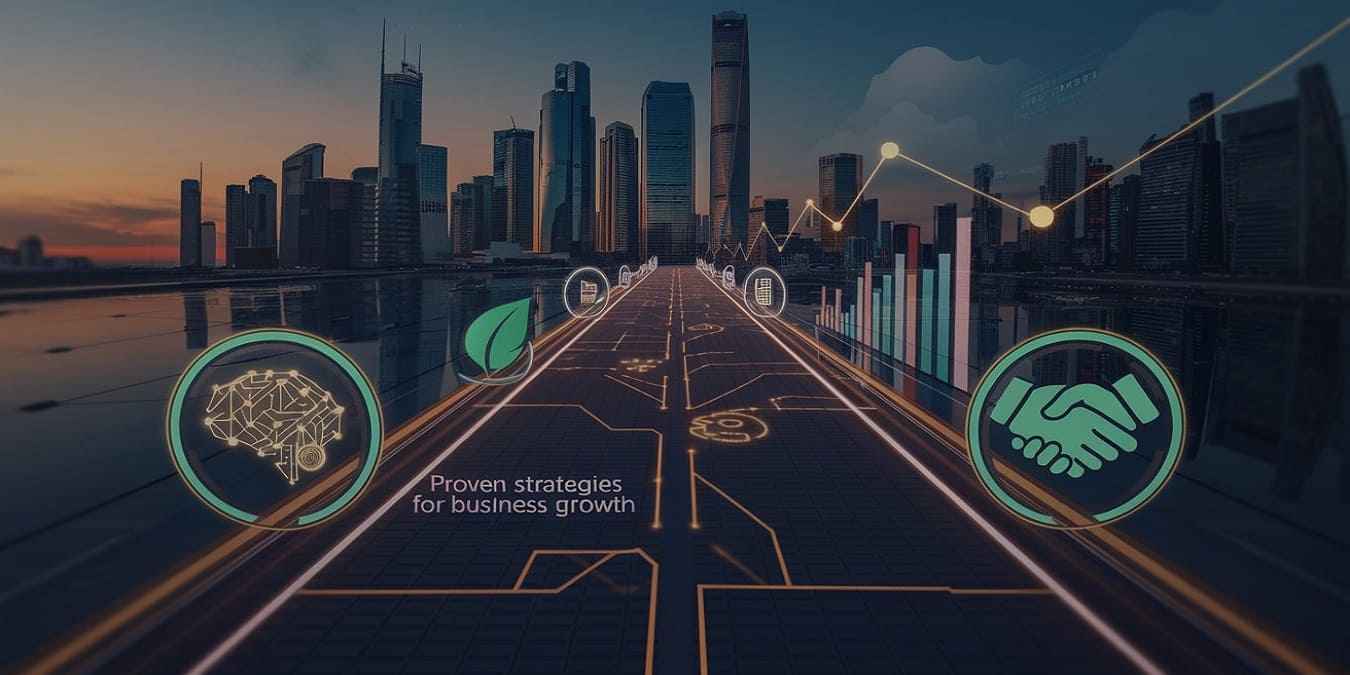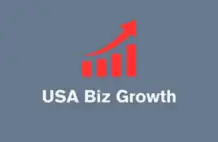
Proven Strategies for Business Growth
Are you ready to future-proof your business? The landscape of entrepreneurship is shifting faster than ever. Companies that fail to adapt risk being left behind, but those who act now can turn uncertainty into opportunity.
Let’s cut to the chase: business growth isn’t about luck. It’s about proven strategies. The kind that turns startups into industry leaders and transforms stagnant companies into revenue powerhouses. Whether you’re a solopreneur or a mid-sized enterprise, the next 18 months will define your trajectory.
“The best way to predict the future is to create it.” – Abraham Lincoln
In this guide, you’ll uncover 10 actionable, data-backed tactics to dominate your market in 2025 and beyond. From AI-driven customer insights to sustainability as a profit engine, these strategies are already working for forward-thinking U.S. businesses.
Let’s dive in.
-
Hyper-Personalization: Treat Customers Like VIPs (Because They Are)
Imagine a world where your marketing feels like a one-on-one conversation. That’s the power of hyper-personalization. By 2025 end, 80% of consumers will expect tailored experiences and businesses that deliver will outpace competitors by 40% in revenue growth.
How to Implement:
- Use AI tools like ChatGPT or Salesforce Einstein to analyze customer behavior.
- Segment audiences based on real-time data (e.g., purchase history, browsing habits).
- Example: Starbucks’ rewards app drives 50% of U.S. sales by personalizing offers.
“Know thy customer” isn’t a slogan, it’s survival.
-
AI Automation: Work Smarter, Not Harder
Why waste time on repetitive tasks when AI can handle them? Businesses using automation will save 20+ hours per employee monthly. From chatbots to inventory management, AI is the ultimate growth accelerant.
Action Steps:
- Automate customer service with tools like Zendesk.
- Deploy AI-driven analytics (e.g., Google Analytics 4) to predict sales trends.
- Case Study: A Texas HVAC company cut response times by 70% using AI scheduling.
-
Sustainability = Profitability
Green isn’t just a trend, it’s a trillion-dollar market. 73% of U.S. consumers now pay more for sustainable brands (Nielsen). Companies ignoring ESG (Environmental, Social, Governance) goals will lose talent, customers and investors.
Pro Tip:
- Adopt circular business models (e.g., Patagonia’s recycled materials program).
- Market your sustainability efforts transparently, avoid “Greenwashing.”
“We cannot choose between growth and sustainability – we must have both.” – Paul Polman, Former Unilever CEO.
-
Hybrid Work Models: Talent Without Borders
Remote work is here to stay. But hybrid models are the sweet spot. Companies offering flexibility attract 3x more applicants and retain 56% more employees (Gallup).
How to Scale:
- Invest in collaboration tools like Slack or Microsoft Teams.
- Build a culture of trust with asynchronous workflows.
- Example: A Chicago marketing agency boosted productivity by 30% with a 3-day office week.
-
Niche Domination: Own Your Category
Trying to appeal to everyone? Stop. The future belongs to niche experts. Think Dollar Shave Club (men’s grooming) or Glossier (millennial skincare).
Steps to Dominate:
- Identify an underserved audience (e.g., eco-conscious pet owners).
- Create content that speaks directly to their pain points.
- Case Study: A vegan bakery in Portland tripled revenue by targeting gluten-free diets.
-
Subscription Economy: Predictable Revenue, Loyal Customers
Netflix didn’t just disrupt TV, it redefined how we pay for value. By 2025 end, it is estimated that 75% of U.S. businesses will offer subscription models.
Launch Your Model:
- Offer tiered pricing (e.g., Basic, Premium, Enterprise).
- Use platforms like Substack or Chargebee for seamless billing.
- Example: A fitness app grew to 100k subscribers by bundling workouts with nutrition plans.
-
Community Building: Turn Customers into Advocates
People crave belonging. Brands like Peloton and Harley-Davidson have mastered this by creating loyal communities.
Build Your Tribe:
- Host virtual events or forums (e.g., LinkedIn groups).
- Reward user-generated content (e.g., testimonials, social shares).
- Pro Tip: Sephora’s Beauty Insider community drives 80% of its annual sales.
-
Data Privacy as a Trust-Builder
With 63% of consumers distrusting how companies use their data, transparency is your competitive edge.
Action Plan:
- Comply with GDPR and CCPA regulations.
- Publish clear privacy policies and opt-in strategies.
- Example: Apple’s “Privacy Nutrition Labels” boosted iPhone sales by 15%.
-
Agile Marketing: Adapt or Die
Gone are the days of annual marketing plans. In 2025 and beyond, agility wins.
Quick Wins:
- Use real-time social listening tools (e.g., Hootsuite).
- Pivot campaigns based on trending topics.
- Case Study: A Denver coffee brand went viral by aligning with #NationalCoffeeDay.
-
Strategic Partnerships: Multiply Your Reach
Why grow alone? Partnerships can open doors to new markets.
How to Collaborate:
- Co-host webinars with complementary brands.
- Cross-promote products (e.g., Spotify + Starbucks playlists).
- Example: A SaaS startup doubled its user base by partnering with a CRM giant.
Conclusion: Your 2025 Growth Blueprint
Let’s be clear: 2025 is already here. These proven strategies aren’t theoretical; they’re being used by U.S. businesses to crush goals today. Whether you’re leveraging AI, building communities or betting on sustainability, the key is to start now.
“Opportunity is missed by most people because it is dressed in overalls and looks like work.” – Thomas Edison.
Your next step? Pick one strategy and implement it this week. Then another. Growth isn’t a one-time event, it’s a habit. And in 2025 and beyond, you’ll be the one setting the trends.
FAQs
- Why is 2025 such a critical year for businesses?
2025 is a tipping point where technological advancements, consumer expectations and market dynamics will converge. Businesses that fail to adapt risk falling behind, while those that embrace innovation and sustainability will dominate their industries.
- What is hyper-personalization and why is it important?
Hyper-personalization involves tailoring products, services and marketing to individual customer preferences using data and AI. By 2025 end, 80% of consumers will expect personalized experiences, making it a key driver of customer loyalty and revenue growth.
- How can small businesses afford AI automation?
Many AI tools, like ChatGPT or Zendesk, offer affordable plans for small businesses. Start with one area, such as customer service or analytics and scale as you see ROI. Automation saves time and money in the long run.
- Is sustainability really profitable for businesses?
Absolutely. 73% of U.S. consumers are willing to pay more for sustainable products. Companies that adopt eco-friendly practices not only attract customers but also reduce costs through efficient resource use and gain access to green investors.
- What’s the difference between remote work and hybrid work models?
Remote work means employees work entirely from home, while hybrid models combine remote and in-office work. Hybrid models offer flexibility, improve employee satisfaction and can boost productivity by 30% or more.
- How do I identify a profitable niche for my business?
Look for underserved markets or unmet customer needs. Conduct surveys, analyze competitors and test ideas with small campaigns. For example, a vegan bakery might target gluten-free or allergy-conscious customers.
- What are the benefits of a subscription model?
Subscription models provide predictable revenue, improve customer retention and create long-term relationships. They also allow businesses to offer tiered pricing, catering to different customer segments.
- How can I build a loyal community around my brand?
Engage your audience through virtual events, forums and social media. Encourage user-generated content and reward loyal customers with exclusive perks. Brands like Peloton thrive by fostering a sense of belonging.
- Why is data privacy a competitive advantage?
With 63% of consumers distrusting how companies use their data, transparency builds trust. Comply with regulations like GDPR and CCPA and clearly communicate your privacy practices to stand out.
- What does agile marketing mean and how do I implement it?
Agile marketing involves adapting campaigns in real-time based on data and trends. Use tools like Hootsuite for social listening and be ready to pivot quickly. For example, align your campaigns with trending hashtags or events.
- How do I find the right strategic partner for my business?
Look for complementary brands that share your target audience but aren’t direct competitors. Collaborate on co-branded campaigns, webinars or product bundles to expand your reach.
- Which strategy should I start with first?
Choose the strategy that aligns most closely with your current challenges and goals. For example, if customer retention is an issue, focus on hyper-personalization or community building. Start small, measure results and scale up.
- How can I measure the success of these strategies?
Set clear KPIs for each strategy. For example, track customer engagement for hyper-personalization, cost savings for AI automation or revenue growth for subscription models. Use analytics tools to monitor progress.
- What if my business is too small to implement these strategies?
Start with low-cost, high-impact tactics. For example, use free AI tools, focus on a niche market or build a community through social media. Small steps can lead to significant growth over time.
- How do I stay ahead of trends beyond 2025?
Stay informed by following industry news, attending conferences and networking with other entrepreneurs. Continuously test new technologies and strategies to keep your business agile and future-ready.
One Comment
Leave A Comment
Categories
- Business Growth Strategies (143)
- Customer Experience and Retention (23)
- Digital Marketing and SEO (29)
- Financial Planning and Investment (25)
- Leadership and Team Management (28)
- Personal Development and Productivity (71)
- Technology and Innovations (53)
- USA Biz Growth (1)
Subscribe To Our Newsletter














I’ve been absent for some time, but now I remember why I used to love this blog. Thank you, I will try and check back more frequently. How frequently you update your site?